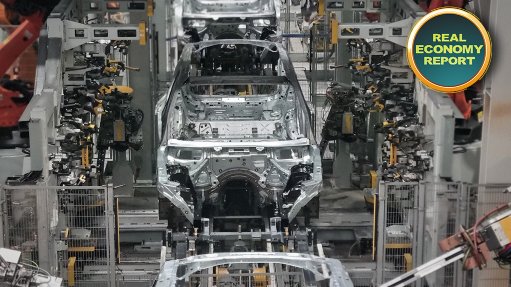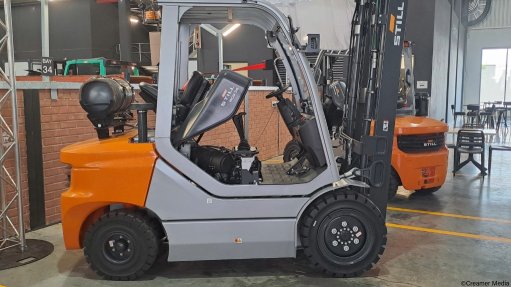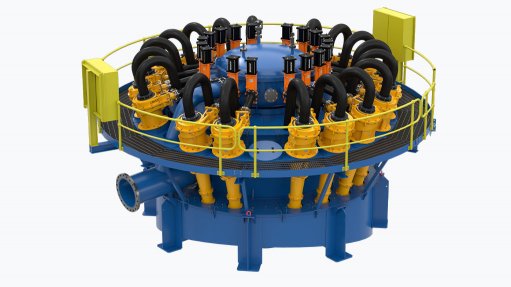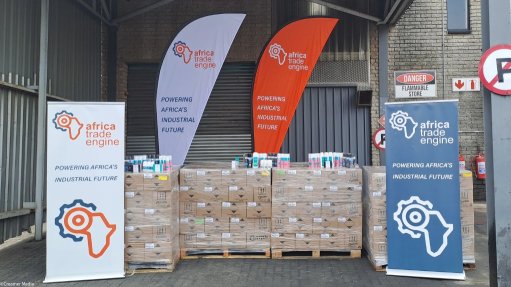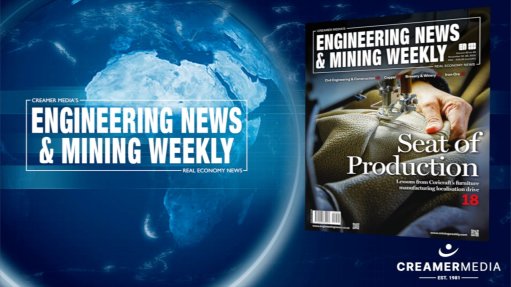The great supply chain reset: 5 ways to embrace the chaos
This article has been supplied.
By: David Nightingale - Associate Director, Consulting, Supply Chain and Operations at EY Africa
In a world where trade wars erupt overnight, geopolitical flashpoints like the ongoing Ukraine conflict and U.S.-China tensions simmer indefinitely, and environmental regulations tighten like a noose, the once-mighty global supply chain is fracturing.
Gone are the days of seamless, linear networks optimised for rock-bottom costs and just-in-time efficiency. Today, businesses face a stark choice: adapt to this volatility or watch their operations crumble under the weight of tariffs, disruptions, and sustainability demands. The "great supply chain reset" is a bold opportunity to build models that are profitable, agile and sustainable, and are better tooled to support companies’ success going forward.
The evidence is irrefutable.
According to the EY-Parthenon Geostrategy in Practice 2025 survey, a staggering 74% of global executives report that political risks have hammered their supply chains over the past two years, with 63% feeling the sting of negative impacts.
This isn't abstract theorising; it's the harsh reality of an average trade dollar traversing over 4 000 kilometers, vulnerable to everything from shipping blockades to carbon taxes.
For decades, companies chased efficiency through sprawling global footprints, outsourcing to low-cost havens like China for mass production. But that model, born in an era of relative stability and open borders, now looks dangerously outdated.
Inflation, supply shortages, and a 200% surge in trade interventions over the past five years, per Global Trade Alert data, have exposed its fragility.
The reset demands a pivot to segmented supply networks, where companies carve their chains into multi-dimensional blocs tailored to regional trade dynamics.
Instead of one-size-fits-all lean operations, firms are investing in strategic buffers, agile capacity, and postponement strategies, and assembling products closer to consumers to dodge tariffs and delays. This is the wholesale reconstruction of value chains, from design and sourcing to logistics and tax structures. Leaders who view this as a burden are missing the point: segmentation fosters not just survival, but innovation. By reallocating capital strategically, businesses can turn risks into competitive edges, like prioritising sustainability to appeal to eco-conscious consumers or leveraging AI for real-time adaptability.
In South Africa, TFG have dramatically reduced their working capital and improved agility through localising sourcing of ladieswear. Historically, orders for an entire season would need to go in 18 months before the season where now they order 6 months before for a limited launch, and from there they are able to gauge stock level demand, and replenish only the better selling styles and sizes. We are frequently asked by clients about advanced demand sensing and replenishment management facilitated by AI.
There are five key elements businesses should be aiming to master to build future-fit supply chains.
First, simplify for growth. This means ruthlessly rationalising product portfolios and geographies. With tariffs inflating costs, think the EU's Carbon Border Adjustment Mechanism slapping fees on high-emission imports, some markets become unviable. Conduct teardowns and cost modeling to prune unprofitable lines, engineering bills of materials (BOMs) to minimise tariff hits. Exiting underperforming regions to free resources for high-growth areas. Firms in electronics and apparel thrive by focusing on localised offerings, proving that less can indeed be more.
Second, segment the supply footprint and challenge traditional hubs. Ditch the mega-factories in favor of diversified networks, onshore for speed, friendshore for reliability, farshore for cost. The "China plus one" strategy, expanding to Vietnam, India, or Mexico, is no longer optional; it's essential amid U.S.-China decoupling.
Technologies like 3D printing and modular lines add flex, while rethinking management hubs, once tax-optimised in places like Singapore, now incorporates AI-driven decision tools. This element underscores a truth: globalism isn't dead; it's evolving into smarter regionalism, reducing exposure to single-point failures.
Third, accept sustainability as a business imperative and build a circular operating model. Embed circularity from the start: design modular, repairable products; mandate recycled materials; and track via digital passports. Regulations demand it, and consumers reward it with loyalty. Circular models cut costs on resources like water and energy while curbing waste, but they also flip business models toward subscriptions, raising tax hurdles. This is where visionaries shine, turning environmental mandates into profit engines, like fashion brands recycling fabrics to slash raw material dependencies.
Fourth, harness automation and cognitive decision support. Technology is the reset's secret weapon. With 73% of companies eyeing generative AI for supply chains, per a 2024 EY survey, tools like ERP systems and control towers provide end-to-end visibility.
AI forecasts demand, it reroutes shipments during crises, and ensures compliance with due diligence laws. For fast-moving consumer goods, maintaining secondary routes is necessary foresight, turning chaos into calculated advantage.
Finally, forge collaborative relationships built on value. In segmented networks, suppliers become partners in sustainability and resilience. Prioritise deep ties over cheap bids, weighing in-house control against outsourced agility.
There are various government incentives, like subsidies or grants, that accelerate this. Vertical integration guards IP, but ecosystems foster innovation. Trust and shared goals are important, as is the continuous monitoring of tariffs, regulations, and talent pools for true supply chain resilience.
Backed by digital tools and AI, it equips firms for perpetual flux. Yet, as the EY analysis warns, success hinges on building capabilities in segmentation, sustainability, and analytics.
In this unpredictable landscape, complacency is corporate suicide. But for bold leaders, the great supply chain reset offers a chance to thrive, crafting networks that are not only tough but transformative.
The question isn't if you'll adapt; it's how swiftly you'll seize the future.
Article Enquiry
Email Article
Save Article
Feedback
To advertise email advertising@creamermedia.co.za or click here
Comments
Announcements
What's On
Subscribe to improve your user experience...
Option 1 (equivalent of R125 a month):
Receive a weekly copy of Creamer Media's Engineering News & Mining Weekly magazine
(print copy for those in South Africa and e-magazine for those outside of South Africa)
Receive daily email newsletters
Access to full search results
Access archive of magazine back copies
Access to Projects in Progress
Access to ONE Research Report of your choice in PDF format
Option 2 (equivalent of R375 a month):
All benefits from Option 1
PLUS
Access to Creamer Media's Research Channel Africa for ALL Research Reports, in PDF format, on various industrial and mining sectors
including Electricity; Water; Energy Transition; Hydrogen; Roads, Rail and Ports; Coal; Gold; Platinum; Battery Metals; etc.
Already a subscriber?
Forgotten your password?
Receive weekly copy of Creamer Media's Engineering News & Mining Weekly magazine (print copy for those in South Africa and e-magazine for those outside of South Africa)
➕
Recieve daily email newsletters
➕
Access to full search results
➕
Access archive of magazine back copies
➕
Access to Projects in Progress
➕
Access to ONE Research Report of your choice in PDF format
RESEARCH CHANNEL AFRICA
R4500 (equivalent of R375 a month)
SUBSCRIBEAll benefits from Option 1
➕
Access to Creamer Media's Research Channel Africa for ALL Research Reports on various industrial and mining sectors, in PDF format, including on:
Electricity
➕
Water
➕
Energy Transition
➕
Hydrogen
➕
Roads, Rail and Ports
➕
Coal
➕
Gold
➕
Platinum
➕
Battery Metals
➕
etc.
Receive all benefits from Option 1 or Option 2 delivered to numerous people at your company
➕
Multiple User names and Passwords for simultaneous log-ins
➕
Intranet integration access to all in your organisation








